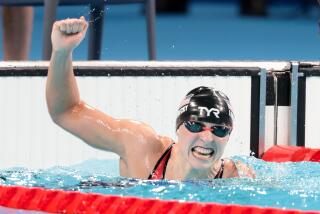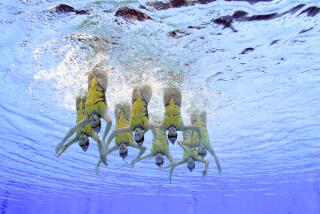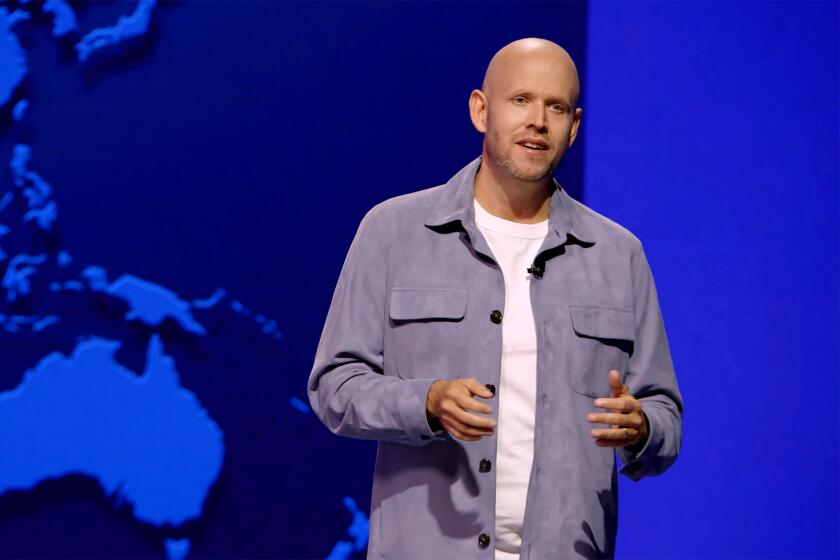Woman makes history with shark-infested swim to remote California islands
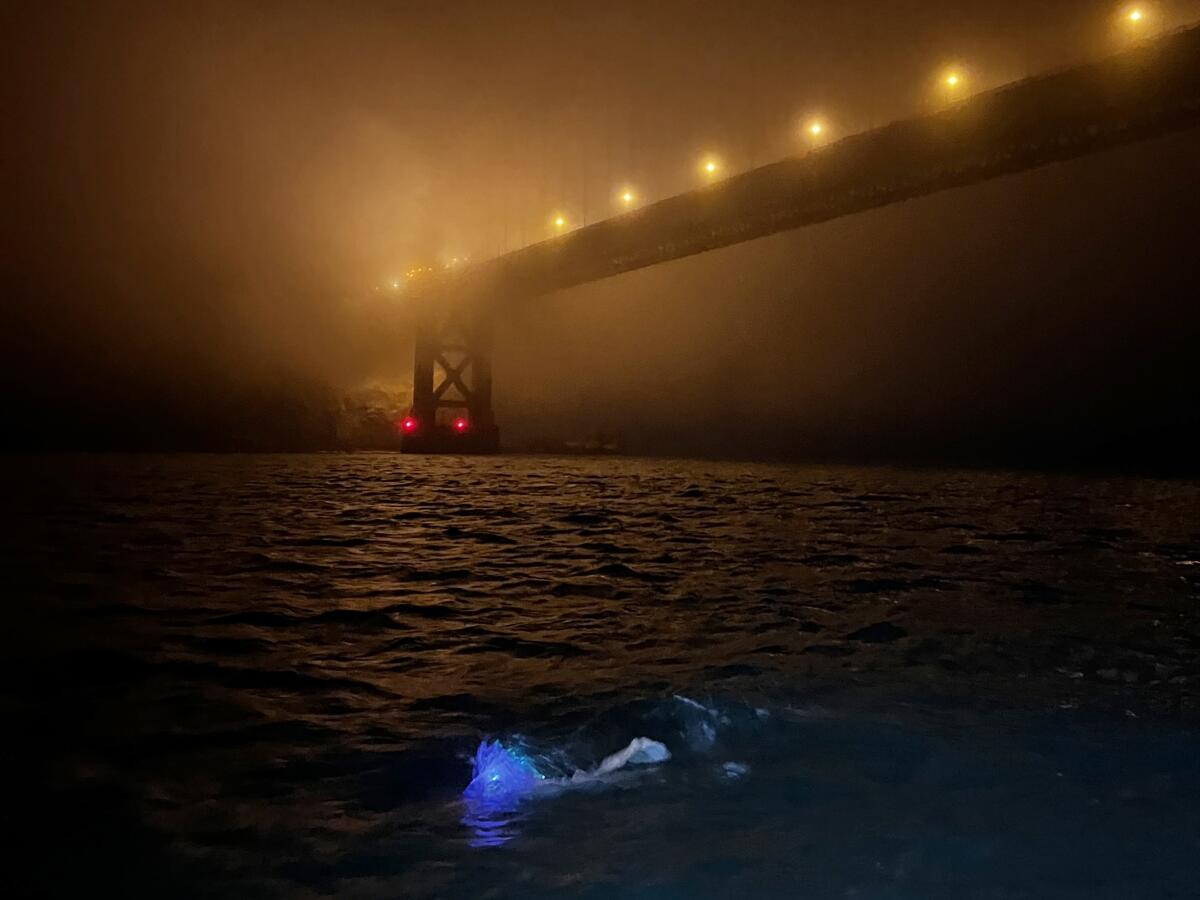
Amy Appelhans Gubser was a swimmer in college, but when she graduated more than three decades ago, she hung up her cap and goggles and went about the business of working as a nurse and raising two children.
She didn’t swim seriously again until about 10 years ago, when a friend coaxed her into the ocean — with Gubser resisting all the way.
On Saturday, Gubser, 55, became the first person, male or female, to swim from the Golden Gate Bridge to the Farallon Islands. It was a journey of 29.7 miles through roiling, freezing, famously shark-infested waters.
In celebrating Gubser’s achievement, the Marathon Swimmers Federation noted that the feat “has a reasonable claim to be the toughest marathon swim in the world.” Though five other people have been recorded as swimming solo across the Gulf of the Farallones, Gubser is the first to do it heading east to west — a more difficult journey because colder water temperatures near the islands hit swimmers when they are at their most exhausted.
“I don’t think we all know what we’re capable of,” Gubser said this week, on her lunch break from her job at UCSF Benioff Children’s Hospital, where she works in the fetal cardiac unit. She added that she hoped her feat would inspire other people to do hard things. Her own swim, she said, was dedicated to a brother and friends who are battling cancer.
The Farallones are a fog-shrouded, nautically menacing string of islands west of San Francisco that Native Americans believed were a home for the spirits of the dead. Though just off the coast of one of the world’s most famous cities, they are a national wildlife refuge, thus uninhabited, and closed to the public.
Gubser, who lives in Pacifica, just south of San Francisco, would look out and see them almost every day — provided they were visible.
“They’re mysterious. They’re creepy. They’re captivating,” she said. “I’m just drawn to them.”
But for a long time, Gubser wasn’t swimming anywhere, let alone across a gulf considered among the most treacherous in the world.
She had a swimming scholarship to the University of Michigan, where she was a backstroker. But when she left college, she left swimming as well.
Then, about 10 years ago, a friend challenged her to join him on an open-water swim. After some amount of cajoling, Gubser finally showed up to meet him at the South End Rowing Club, the famed open-water swim club in San Francisco just across the bay from Alcatraz.
“I started crying,” Gubser said, recalling that first day on the beach. “I was terrified. I put my feet in; my feet were freezing.” How was she going to put her whole body in that water?
Eventually, she got in and began to swim. And as she warmed up, something remarkable happened: “Every cell in my body was alive,” she said.
Almost from that day, she was hooked on open-water swimming.
She joined the South End Rowing Club for its annual swim from Alcatraz back to the club.
She swam beneath the Golden Gate Bridge, and across Santa Monica Bay, and from Santa Catalina Island to the Palos Verdes Peninsula.
“It just felt so fun,” she said, adding that her children thought she was “absolutely bonkers.”
She swam around Manhattan, and from Ireland to Scotland, and from Spain to Africa.
But nearly every day, she would look out from her little town, and there the Farallones would be.
About five years ago, she decided she wanted to attempt it.
But achieving it, said Evan Morrison, the co-founder of the Marathon Swimmers Federation, requires not just incredible grit and hard training but also the right currents and weather conditions.
The area around the Farallones is a breeding ground for great white sharks, but in May many of them head elsewhere.
On May 11, with weather conditions judged to be favorable, Gubser got into the water just before 3:30 am. She wore a black and white swimsuit — an attempt to fool sharks into thinking she might be an orca — and a swim cap with a light on it, so her support team could see her.
The quest started late because a container ship came through.
But once she was in the water, Gubser began to swim. For the first four hours, she was lucky: An ebb tide carried her about 10 miles.
“I sang verses to songs,” she said. “I solved four or five world problems in my head.”
The remaining 19.7 miles would take another 13 hours.
When she began swimming, the water temperature was in the 50s. But in the cold currents that swirl around the Farollones, it reached 43 degrees at one point.
“I thought to myself, if I have to do this for much longer, I don’t know if I can,” she said. But she didn’t want to stop, either.
As Gubser swam, a crew followed her in a a small boat, tossing her nourishment at various intervals. One person kept an eye on her at all times, said Sarah Roberts, a friend and fellow open-water swimmer who was on the boat. Another person kept a sharp eye out for sharks.
The closer the group got to the islands, Larson said, the quieter and more intense everyone became.
The fog had descended, and there was “this sense of creepiness, of this wild, feral place.”
A few miles from the finish point, the group spotted a dead sea lion floating in the water. This gave everyone pause.
“There’s really only one reason for it to be dead,” Roberts noted, and that is “because something chomped it.”
Should they pull Gubser out of the water?
She kept swimming.
“They did not tell me [about that],” Gubser said. “Which was a good thing.”
She reached the buoy that was her endpoint just after sunset. The group on the boat erupted into cheers.
Gubser burst into tears. She yelled: “I did it.”
Gubser’s crew pulled her into the boat. Her skin was ice cold, Roberts said, and everyone went to work trying to warm her up, drenching her in warm water, plying her with hot tea, and eventually wrapping her in an electric blanket.
Roberts recalled hearing Gubser say something to the effect of: “I can’t believe I did that.”
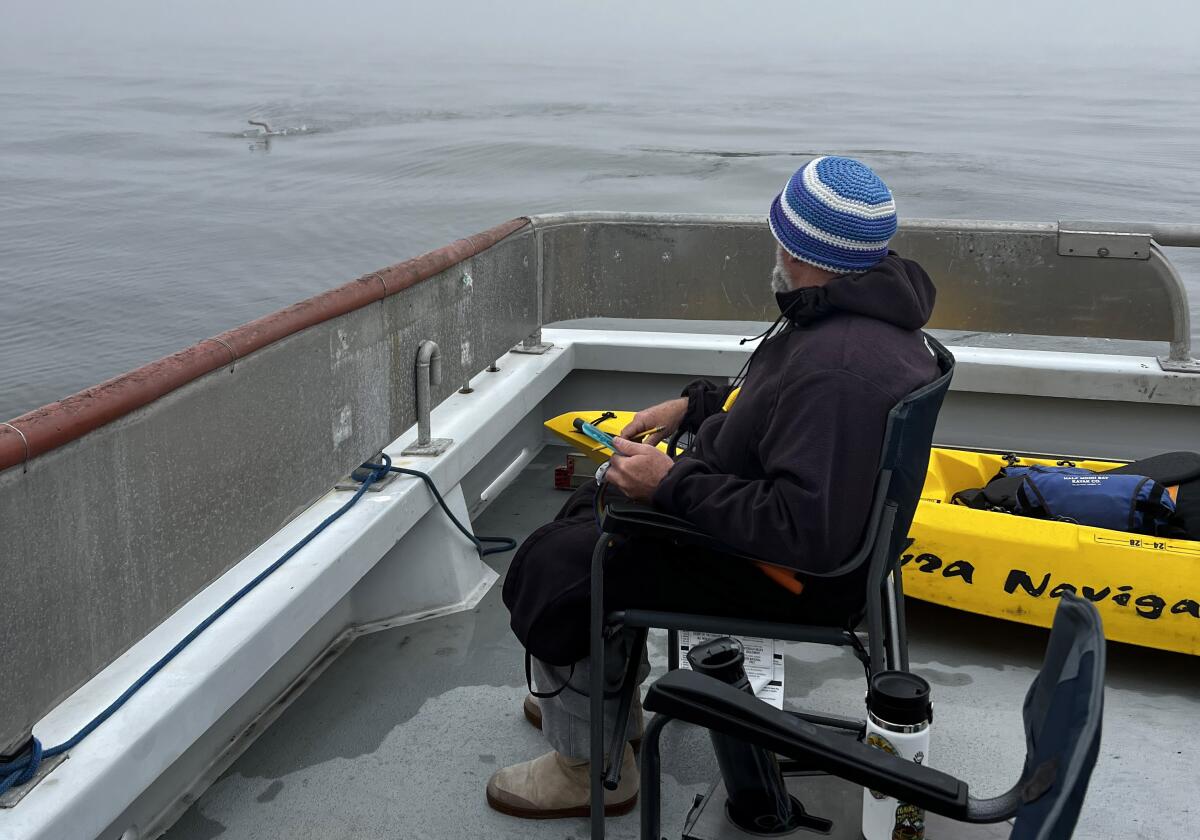
Morrison, the co-founder of Marathon Swimmers, said Gubser is “a beloved member of the open-water swimming community” known for her enthusiasm and support for other swimmers.
“It couldn’t happen to a better person,” he said of her accomplishment.
One of Gubser’s teammates took detailed notes of her odyssey, and once they have been submitted to Marathon Swimmers and reviewed, her swim will be officially ratified, Morrison said.
By Tuesday, Gubser was sufficiently recovered that she was back at work.
What she wanted others to take from her swim, she said, was that almost anyone is capable of an astonishing feat.
She is 55, and a grandmother, to boot. “If I was in a room of elite athletes,” she said, “I would be extremely underwhelming.”
“I just think it is amazing that I can do this,” she added.
There is no monetary prize for the swim, and when asked if her life would change as a result of it, Gubser said: “I’m still at work today, aren’t I?”
Still, she will get one perk. As she swam toward the island, the Coast Guard radio traffic alerted a researcher on the Farallones that she was coming. The man walked down to the beach and took photos of her as she finished her swim. Then he invited her back for a special tour of the island.
She accepted, but said: “I’m not going to swim there.”
More to Read
Sign up for Essential California
The most important California stories and recommendations in your inbox every morning.
You may occasionally receive promotional content from the Los Angeles Times.

